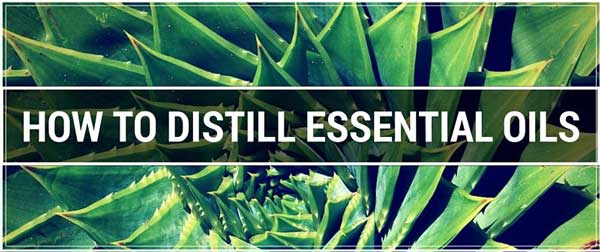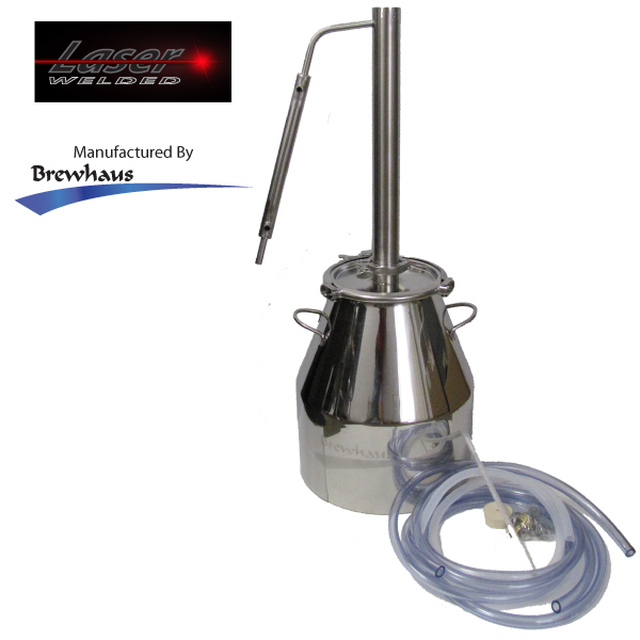Distill Essential Oils With a Moonshine Still

Essential oils have long been used in aromatherapy, and many people believe that they offer remarkable healing properties. Brewhaus moonshine stills are ideal for extracting essential oils because they are made from stainless steel, which will not react with your oils like a copper still would. The stainless steel is inert and will not react with other compounds in the distillate like copper does, and therefore our units are capable of yielding a much higher-quality oil than many others.
Using Steam Distillation For Extracting Essential Oils
The two most well-known methods used for distilling essential oils are dry heat and steam distillation. Steam distillation is a more common method than dry heat, both commercially and at home, and it’s also fairly simple. Basically, as the steam passes through your material, the heat forces the pockets that hold the essential oils to open, which causes the oils to release and then evaporate. The water vapor and essential oil rise together in the distillation column until they enter the condenser and re-liquefy. The oil and water separate in your collection container, which makes it easy for you to only gather the pure essential oil.
Essential Oil Distillation With A Brewhaus Moonshine Still
The method that is most commonly used for distilling Essential Oils is Pot Distillation, which is also known as the Traditional Method. Ideally, you’ll want to use fresh, organic material such as lavender, rosemary, and mint are excellent materials to start with if you’re a beginner.
1. Add 10L (approximately 2.64 gallons) of distilled water to your kettle.
2. Add the material that you wish to extract the essential oils from to the kettle, packing the kettle rather tightly.
3. Attach the head of your pot still to your kettle. If you’re using the Essential Extractor Pro Series II, attach only the top portion of your column directly to the kettle. Connect the water lines to the condenser.
4. Place your distiller on a heat source, and direct the collection hose to your collection container.
5. Once your kettle is nearly at boiling temperature, start a slow flow of cooling water to the condenser.
6. Check on your flow of cooling water once your essential oils start to come out of the condenser to make sure that the vapors are condensing fully. Then collect your oils in small portions and change the collection container about every 2 cups or 500ml. This is important when distilling essential oils because the quality drops quickly near the end of distillation; that low-quality distillate from the end can have a big impact on the overall quality of your essential oil if combined with what you collected early-on in the process.
7. Once you have collected a maximum of 8L (or when you notice a decline in the quality of your essential oil), remove your moonshine still from heat.
8. Combine the containers in which you collected the essential oils (except for the low-quality oil at the end), and allow them to sit in a covered container. Your distillate will appear cloudy initially, but after a few hours, the oils will have separated from the water and result in a clear liquid.
9. While you are waiting for your oil and water to separate and after your moonshine still cools, empty the kettle and clean the entire unit. Essential oil flavors are very strong and can linger within a moonshine still, so you want to be sure to thoroughly clean the unit.
10. To separate the oil from the water, simply use a separating measuring cup, which is available at most kitchen supply stores.
11. Use dark-colored, airtight, glass containers to bottle your essential oils. Clearly label them with the type of oil and distillation date—just in case you want to compare them with different batches.
Uses For Essential Oils
Essential oils aren’t just for aromatherapy. You can use essential oils to make your own natural cleaning products such as window cleaner, grout scrub, and general purpose disinfecting cleaners. You can also use essential oils to create home remedies for issues such as blisters, cold and flu, headaches, upset stomach, insect bites, arthritis and more. Of course, you can also use essential oils to craft your own all-natural essences to flavor your own distilled, neutral spirits with the essence of anise, orange, lemon, oak, gin, and more.









Comments